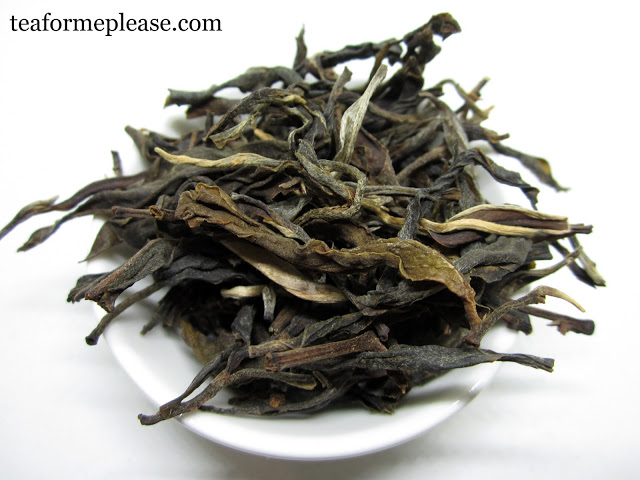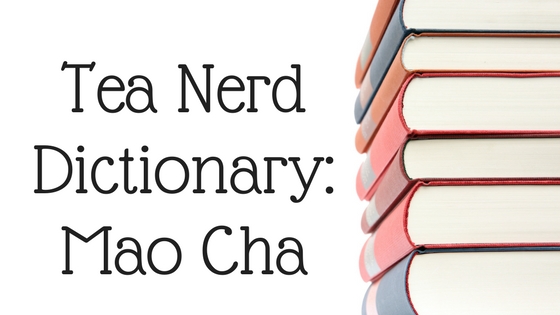Tea Nerd Dictionary is a series on the blog where I try to define tea world jargon. The main goal is to help those that are just diving into tea to deepen their understanding and to hopefully make it less intimidating for them as a result.
Breaking Down the Meaning
For starters, let’s begin by tackling the second part of this term. Cha (茶) is the word for tea in Cantonese as well as many other languages spoken around the world. I really have no idea where the below graphic originated as I’ve seen it used in many places over the years. It’s still a nice breakdown of the meaning of the kanji logographic for tea.

So now that we know what the meaning of cha is, what about mao? Mao refers to hair or fur (as in young tea leaves). It can also mean something that is rough or unfinished. Mao
Babel Carp defines mao cha as:
“literally Coarse [unfinished] Tea (毛茶): in tea manufacture, a stage at which the enzymes in the tea have been deactivated (sha qing) by heat so that normal oxidation cannot occur, but before an optional final roasting to change the flavor, in the context of pu’ercha, there is a more specific meaning: the sun- and/or heat-dried leaves of the Da Ye tea tree prior to compression”

Sheng Puerh Mao Cha
Unfinished Puerh
Mao
Puerh tea is sorted by hand before it is compressed. Leaves that are the wrong color or shape, called
Mao cha can mean oolong too!
In the context of oolong, mao cha will mean tea that has not yet reached the final step of processing. Wuyi cliff teas and Phoenix oolongs are finished by charcoal roasting before they are packaged for sale. The appearance of the leaves will be greener than the finished product with a higher prevalence of stems. You can see this in the image below of some Shui Xian mao cha that a tea friend made in the Wuyi mountains last year. Rolled oolongs like Tie Guan Yin still needs to have the stems removed from the leaves.
Is there a word you’d like to see featured in this series? Let me know about it in the comments!

Shui Xian Mao Cha, note the greener color and abundance of stems
